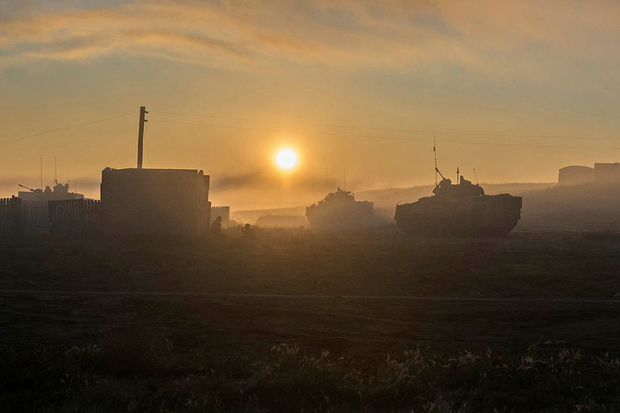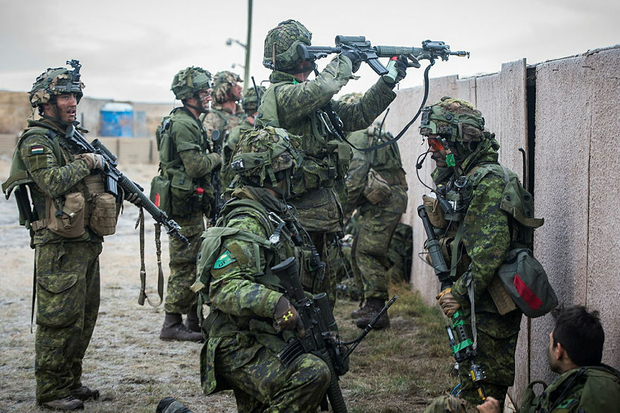
There are 17 training villages on the Suffield Military Training Area (MTA) with a total of 803 assets, ranging from shipping containers to fence lines and trenches, which are used to provide a realistic training environment. At the end of every training season, the Prairie Infrastructure Team (PIT) is tasked with the ‘winterisation’ of the training area. This is a challenging but vital task that involves closing down the training villages and preparing them for the extreme weather conditions that the Canadian winter can bring.
Preparing for the winter extremes
In the coldest months of the year, January and February, temperatures in Alberta can drop as low as -30 to -40°C (-22 to -40°F). The extreme cold alone can have a destructive impact on training infrastructure, so it’s vital that repairs are carried out ahead of the winter season, as well as providing buildings and assets in the training villages with sufficient protection to prevent them from being damaged by the elements.
The PIT has a short window in which it deploys to the MTA to prepare it for the re-commencement of training in the new year. All winterisation work needs to be completed by the end of September, before the extreme winter conditions set in. The work is wide-ranging and can call for extensive repairs, as you might expect following months of training exercises!

Balancing wildlife protection with military training
To maintain our consent to train in Canada, it’s essential that all UK and Canada directives and policies are followed, including those which relate to the protection of wildlife.
Due to the extremes of winter, the buildings on the MTA can attract shelter-seeking wildlife, including several Species at Risk (SAR). One of the team’s main efforts year-round, and especially prior to the winter months, is to make sure that the buildings on the MTA are as inaccessible as possible, as wildlife can enter through the smallest of gaps. It’s important to prevent any SAR from nesting in one of the buildings as unfortunately this can severely restrict training within the area, or even force exercising units to re-plan and re-locate to another area of the MTA.

4 comments
Comment by Rob Merritt posted on
I dont think these guys are Royal Dragoons
https://insidedio.blog.gov.uk/wp-content/uploads/sites/29/2023/01/imgonline-com-ua-resize-0suOwrCpB0Z.jpg
guy bottom right has a Canadia flag other standing guy with AR has a Dutch or Hungarian flag
Comment by Jeremy Thorman posted on
Not British Army pattern MTP, but the guy on the left does appear to have an RDG patch on his right arm?
Comment by Graham Moore posted on
Looks like Canadian combat (CADPAT) and Canadian assault rifles.
Comment by Gord posted on
Perhaps you ought to edit the headline to be truthful and up to date in the stories:
Putting BATUS to BED .... abandoning NATO and moving to Oman.
Some of us studied history -- or listened to our parents -- and remember those who fought to keep Britain free in two world wars. Some of us understood Canada's role in supplying goods and military supplies when Britain was isolated and suffering. Some of us look at Oman's currency and fail to see a British monarch. Some of us realize North Atlantic are words represented in NATO.
Now that the United Kingdom has set the example of looking to the East to build alliances, perhaps you'll understand if Canada looks across the Pacific to build alliances.